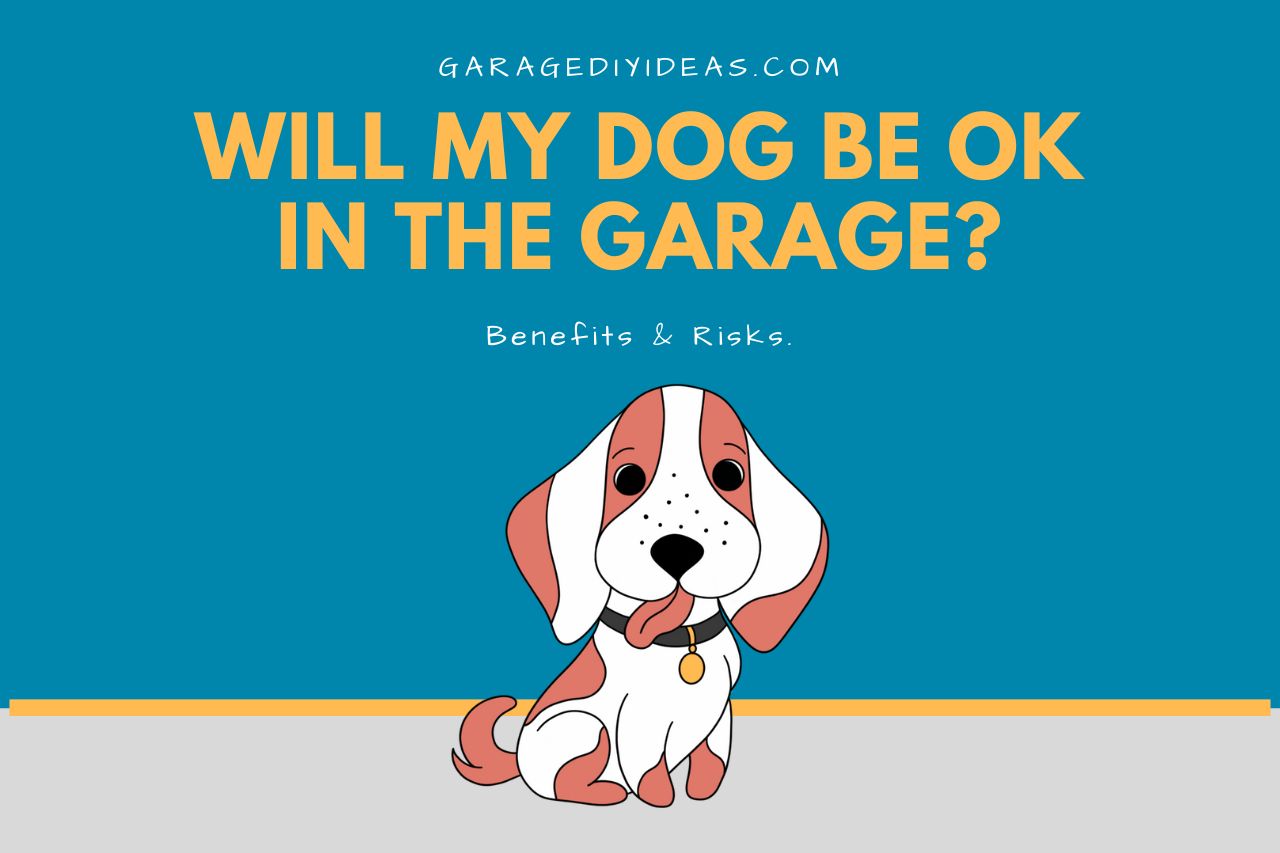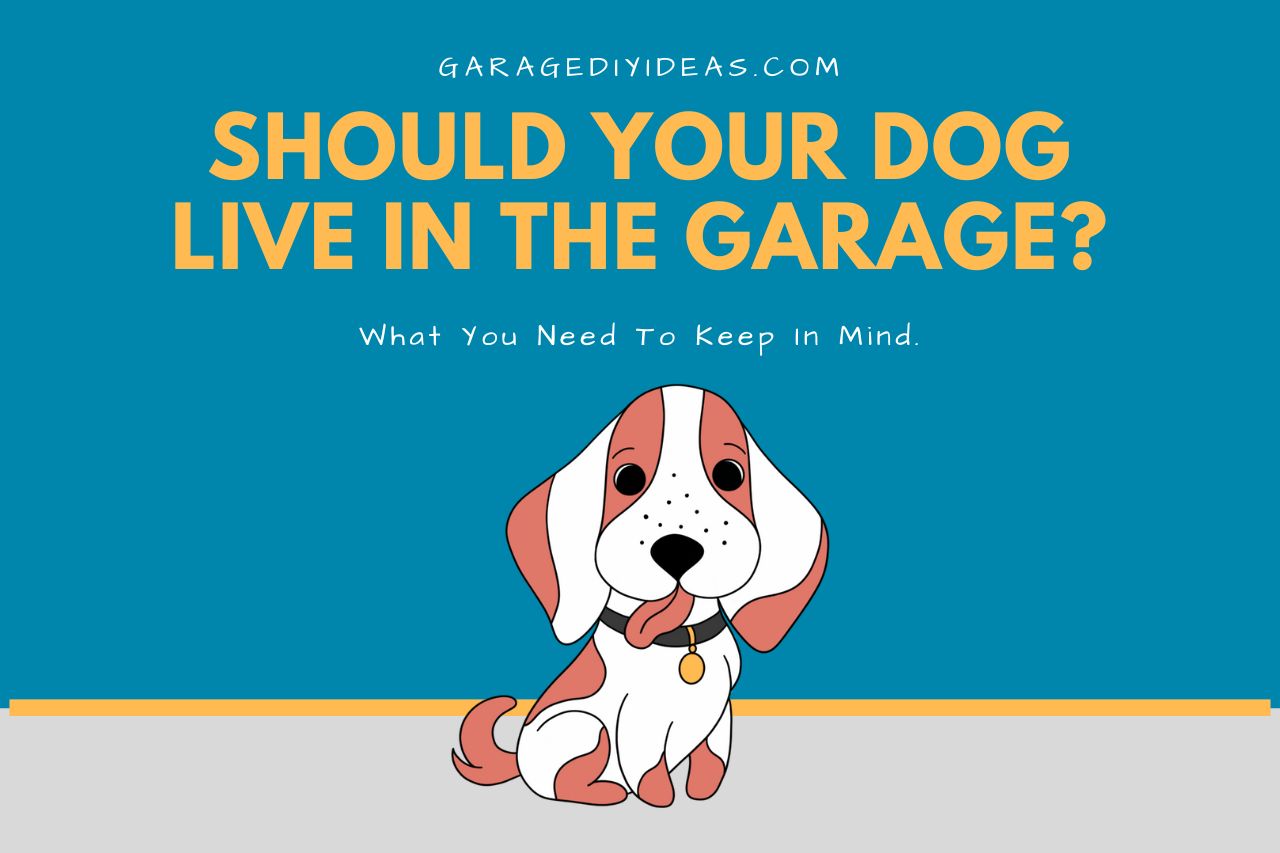Dog owners often wonder if their furry friend will be safe in this environment. Can dogs live in garages? The answer may surprise you! Read on to learn more about living with a pet in a garage and tips for making sure your pup stays safe.
What You'll Learn Today
Can I Leave My Dog in the Garage During the Day?

If the temperature is right and other conditions are provided for, yes, you can leave your dog in the garage during the day. However, it’s important to make sure that your garage is a safe and comfortable place for your pet.
- First, the temperature should be cool but not too cold – consider installing a dog door so that your pet can come and go as necessary.
- Second, there should be plenty of fresh water available, and the area should be clean and free of any toxic materials.
- Finally, your dog will need a place to rest and feel relaxed; a soft bed or crate with a blanket would be ideal.
With these precautions in place, you can feel confident that your dog will be happy and safe while you’re away.
Benefits of Keeping a Dog in the Garage
A garage can be a great place for a dog, especially if it is not comfortable being around strangers or other animals. By keeping your dog in the garage, you can provide them with a safe and secure space that is all their own. Additionally, the garage can help to protect your dog from the elements.
Here are a few more benefits.
More Room to Move Around
One benefit of keeping your dog in the garage is that he will have more room to move around. If your dog is used to being in the house, he may feel cramped in the garage.
However, if you give him some toys and a comfortable place to sleep, he will quickly adjust to his new surroundings. And once he gets used to the garage, he will be able to roam around and explore as much as he wants.
This extra space will give him the chance to run and play, and it will also allow him to relieve himself without having to go outside.
A Warm Space During the Cold Months
When it’s cold outside, your dog may appreciate having a space where they can escape the elements. If you have a heater in your garage, that’s even better.
Just be sure to keep an eye on your dog to make sure they don’t overheat. You may also want to leave the door open a crack so they can come and go as they please.
Less Visual Stimuli = Less Barking
Dogs are social creatures that thrive on interaction with their pack. However, too much visual stimuli can be overwhelming for them, causing them to bark excessively.
When a dog is kept in the garage, they are less likely to be bombarded with visual stimuli, resulting in less barking. In addition, the garage provides a more controlled environment where the dog can feel safe and secure.
Should Your Dog Live in the Garage?

Dogs are social animals that require companionship, exercise, and plenty of opportunities to explore and learn. When left alone in a garage, they may become bored, anxious, or even depressed.
That’s why it’s probably not a good idea to have your dog live full-time in the garage, even if it’s fine for a few hours while you’re at work.
Additionally, unless the garage is temperature-controlled, it can be too hot or cold for your dog to comfortably spend prolonged periods of time there.
If you must leave your dog in the garage, make sure to provide them with plenty of bedding, toys, and water, and give them regular breaks to stretch their legs and relieve themselves.
Most importantly, don’t forget to show your furry friend plenty of love when you’re finally reunited at the end of the day.
And if you’re thinking about converting your garage into a permanent doggie hangout, be sure to check out this video:
What to Keep in Mind When Keeping Your Dog in the Garage
There are a few things you should keep in mind if you are going to let your dog stay in the garage.
Feeding Time
While it’s certainly better than leaving them completely alone, there are a few things you should keep in mind if you’re planning on keeping your dog in the garage.
First, make sure that they have plenty of food and water – just because they’re not inside doesn’t mean they shouldn’t have access to all the same amenities.
Isolation
Isolation is another concern if you keep your dog in the garage. Dogs are social animals that require lots of interaction to stay happy and healthy.
Don’t forget to give your dog some attention when you do see them – even if it’s just a quick game of fetch or a belly rub.
Provide a Bed
If you have a dog that you keep in the garage, it is important to provide them with a comfortable bed. This will give them a place to rest and will help to keep them from sleeping on the cold concrete floor.
A dog bed should be large enough for the dog to stretch out in, and it should be filled with soft materials that will provide insulation and cushioning. In addition, the bed should be placed in a spot that is away from any drafts or direct sunlight.
Remove Hazards
Regardless of how often you open your garage door, it’s important to keep hazards out of reach of your dog when they’re inside. Things like lawn chemicals, gasoline, power tools, and even certain cleaning supplies can be toxic if ingested by your pooch.
In addition, it’s important to secure any loose items that could become tripping hazards, as well as anything that could fall and crush your furry friend.
Finally, be sure to keep the garage door opener out of reach – dogs have been known to accidentally press the button, resulting in a crushed paw or tail.
Keep it Warm in the Winter
It is important to take steps to keep your furry friend warm in the winter. One way to do this is to install weather stripping around the door to the house.
This will help to seal in heat and prevent cold drafts from entering the garage. Another option is to set up a heating system, such as a space heater or radiant flooring. You can also provide your dog with a heated dog house or bed.
Finally, be sure to install a thermometer in the garage so that you can monitor the temperature and make adjustments as needed.
Keep it Cool in the Summer
If you opt to keep your dog in the garage, there are a few things you can do to ensure that it stays cool and comfortable. First, make sure that the garage is well ventilated.
A cracked window or two will help to circulate air and keep the space from becoming too stifling. You may also want to consider fitting the garage with insulation or installing a fan.
And of course, be sure to provide plenty of water so that your dog can stay hydrated. By taking a few simple precautions, you can help your dog beat the heat in the summertime.
Is it Legal to Have a Dog Live in the Garage?
In the United States, the Animal Welfare Act (AWA) requires that all dogs have access to proper shelter. This means that they must have a space that is large enough for them to move around freely, and that is protected from the elements.
Dogs that are kept in garages typically meet these requirements, as long as they are not being chained up or otherwise restricted.
However, there are some potential risks associated with keeping a dog in a garage. For example, if the garage is not well-ventilated, the dog may be exposed to harmful fumes from cars or other machinery.
In addition, extreme temperatures can be dangerous for dogs, so it is important to ensure that the garage is not too hot or too cold.
Overall, as long as the dog has adequate space and shelter, it is legal to keep him in the garage. Follow the steps outlined in this article and you should both be just fine!